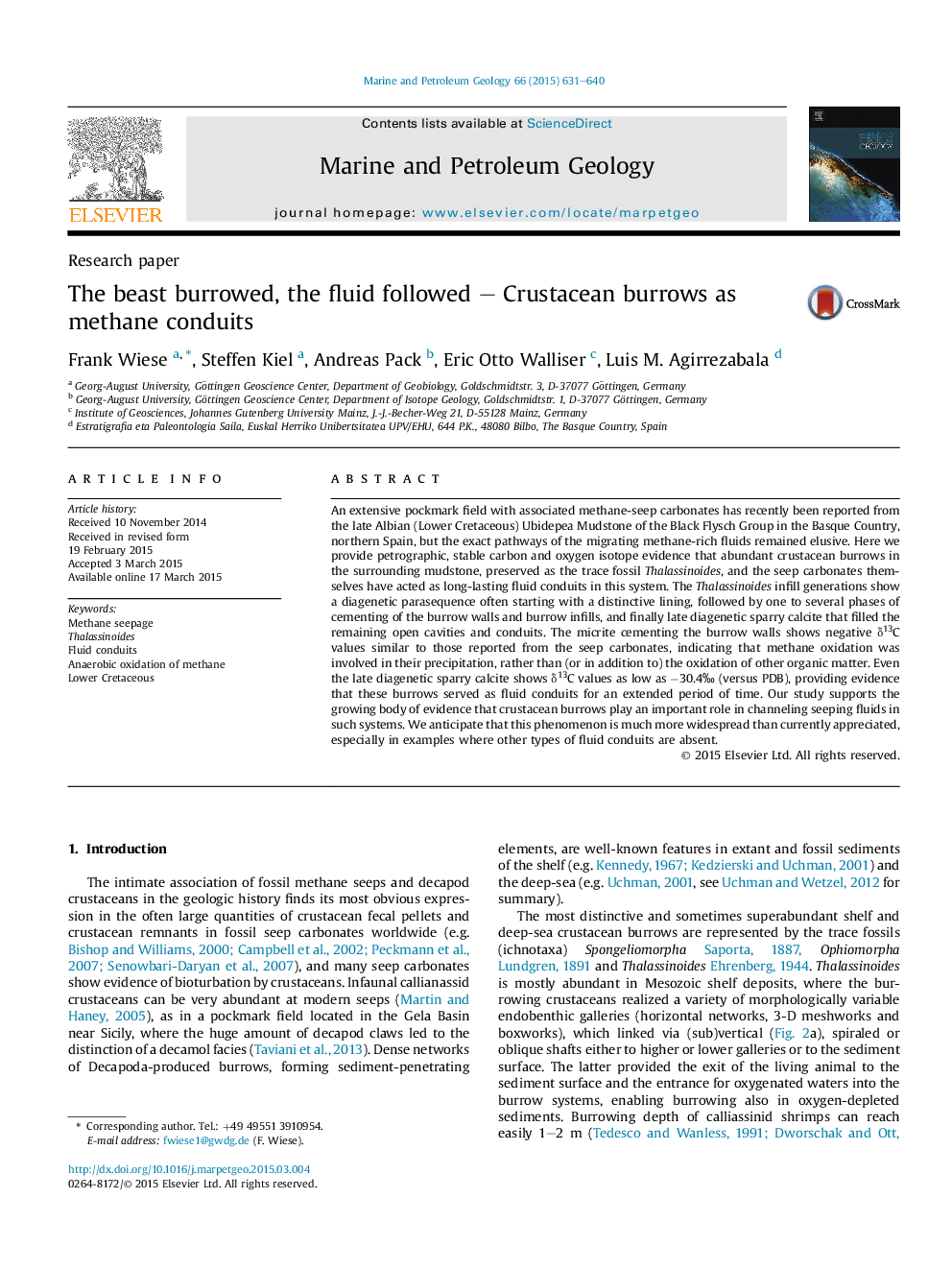| Article ID | Journal | Published Year | Pages | File Type |
|---|---|---|---|---|
| 4695554 | Marine and Petroleum Geology | 2015 | 10 Pages |
•We sampled Thalassinoides burrows from a Lower Cretaceous pockmark field.•Polished slabs show that vertical burrows remained open for some time.•Low δ13C values of burrow walls indicate AOM-related carbonate precipitation.•Low δ13C values in late diagenetic cements show long influence of methane seepage.•Open Thalassinoides networks acted as fluid conduits and supported seep discharge.
An extensive pockmark field with associated methane-seep carbonates has recently been reported from the late Albian (Lower Cretaceous) Ubidepea Mudstone of the Black Flysch Group in the Basque Country, northern Spain, but the exact pathways of the migrating methane-rich fluids remained elusive. Here we provide petrographic, stable carbon and oxygen isotope evidence that abundant crustacean burrows in the surrounding mudstone, preserved as the trace fossil Thalassinoides, and the seep carbonates themselves have acted as long-lasting fluid conduits in this system. The Thalassinoides infill generations show a diagenetic parasequence often starting with a distinctive lining, followed by one to several phases of cementing of the burrow walls and burrow infills, and finally late diagenetic sparry calcite that filled the remaining open cavities and conduits. The micrite cementing the burrow walls shows negative δ13C values similar to those reported from the seep carbonates, indicating that methane oxidation was involved in their precipitation, rather than (or in addition to) the oxidation of other organic matter. Even the late diagenetic sparry calcite shows δ13C values as low as −30.4‰ (versus PDB), providing evidence that these burrows served as fluid conduits for an extended period of time. Our study supports the growing body of evidence that crustacean burrows play an important role in channeling seeping fluids in such systems. We anticipate that this phenomenon is much more widespread than currently appreciated, especially in examples where other types of fluid conduits are absent.
